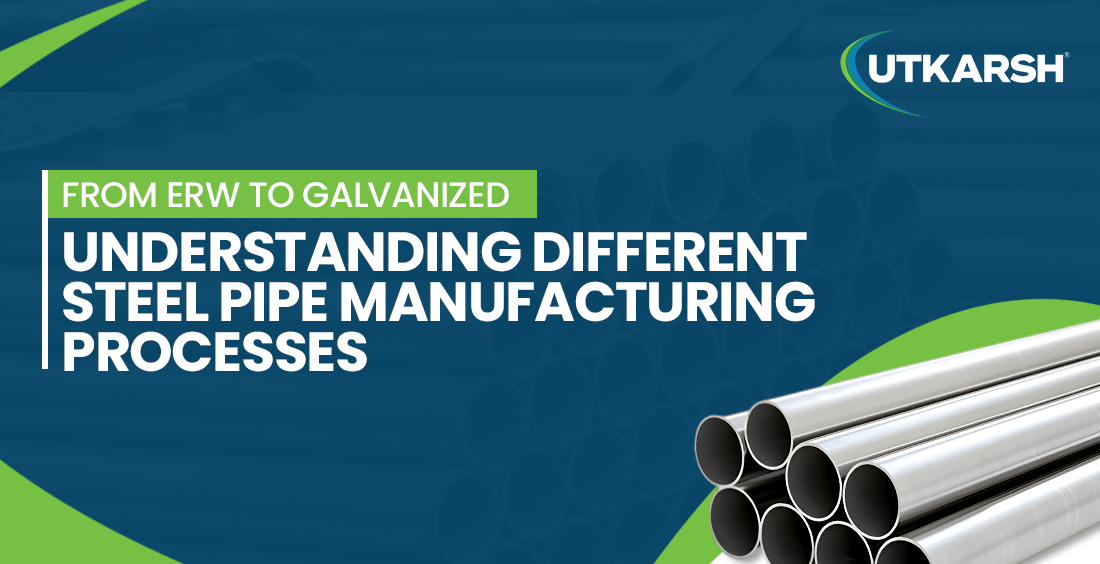From ERW to Galvanized: Understanding Different Steel Pipe Manufacturing Processes

They can be found at construction areas, within plumbing systems, and even in the skeletons of large structures. Steel industries are built around steel pipes. Even though they're common and used in many places, not many people consider or think about their construction. For galvanized tube manufacturers it isn’t just about the rolling metal, it's about the process refinement that provides durability, strength, and value. A steel tube's story is told through the method of its creation. Knowing these methods separates the performance from engineering excellence.
Let's explore the different steel tube manufacturing processes and follow the journey from ERW to Galvanized, one step at a time.
Also read: Signs of Wear and Tear in Galvanised Steel Pipes: Key Indicators
1. Electric Resistance Welding (ERW)
This is one of the most common steel tube manufacturing processes because of how fast and efficient it is. In ERW, steel strips are heated and transformed into a cylindrical shape using a set of rotating rollers. The edges are also heated with electric resistance and bonded under pressure. No filler material is added, making this method affordable and clean.
For galvanized tube manufacturers, ERW pipes serve as the base material before the galvanization process. These tubes are ideal for transporting gas, water, and other fluids under pressure, thanks to their high precision and uniformity.
2. Seamless Pipe Manufacturing
Unlike ERW pipes, steel pipes don’t have any joints or welds. They start with a solid cylindrical steel billet which is heated and pierced to create a hollow tube. This method ensures exceptional strength and resistance, especially under high-pressure conditions.
The seamless steel tube manufacturing process is preferred for oil & gas applications, chemical industries, and heavy-duty mechanical uses. While more expensive than ERW, it offers integrity, particularly where leakage is a critical concern.
3. Galvanization Process
Once pipes are formed, many galvanized tube manufacturers choose to coat them in zinc to enhance corrosion resistance. The most popular galvanizing method is hot-dip galvanization, where steel tubes are submerged in molten zinc. This layer acts as a sacrificial barrier, protecting the steel from rust and harsh environmental elements.
The galvanization step doesn’t just increase lifespan; it adds reliability to pipes used in fencing, structural applications, and outdoor constructions. This process is the backbone for creating tubes that can thrive in all weather conditions.
4. Pre-Galvanized vs. Post-Galvanized Pipes
Pre-galvanized pipes are coated with zinc before being cut and welded, which can leave weld areas unprotected. Post-galvanized pipes, on the other hand, undergo galvanization after fabrication, ensuring even the welds are coated. Most galvanized tube manufacturers prefer the post-galvanized route for a more complete protective layer.
A Reliable Steel Pipes Manufacturer in India
As a trusted steel pipes manufacturer, Utkarsh India combines technology, precision, and reliability in every product. Our offerings are crafted using cutting-edge technology and premium materials to ensure they meet stringent industry standards. Whether for structural support, fluid transportation, or specialised uses, our steel tubes provide the strength and performance needed for success.
Check this out: The Future of ERW Pipes in Green Building Projects